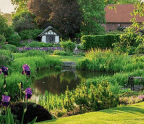

She travelled through Europe, eloped with a married man, and worked as a librarian in Cairo in the 1940s. But when the adventurous Elizabeth David returned to the austerity of post-war Britain, she realised one very particular thing: British food was dismal.
And so began the main work of her life, for which we have much to be thankful. By 1950 she had published. This was the first of eight titles that brought to our tables such exotic substances as garlic and saffron and, crucially, encouraged generous use of herbs. Today, as the Mediterranean diet is increasingly recommended for good health and long life, herbs are becoming ever more popular. If you’ve cooked from Claudia Roden, Yotam Ottolenghi, Rachel Roddy or even Skye McAlpine, the chances are you’ve chopped through small mountains of parsley, coriander, mint, thyme and oregano. “It’s really superb that herbs have come back into fashion again,” says herb doyenne Jekka McVicar.






